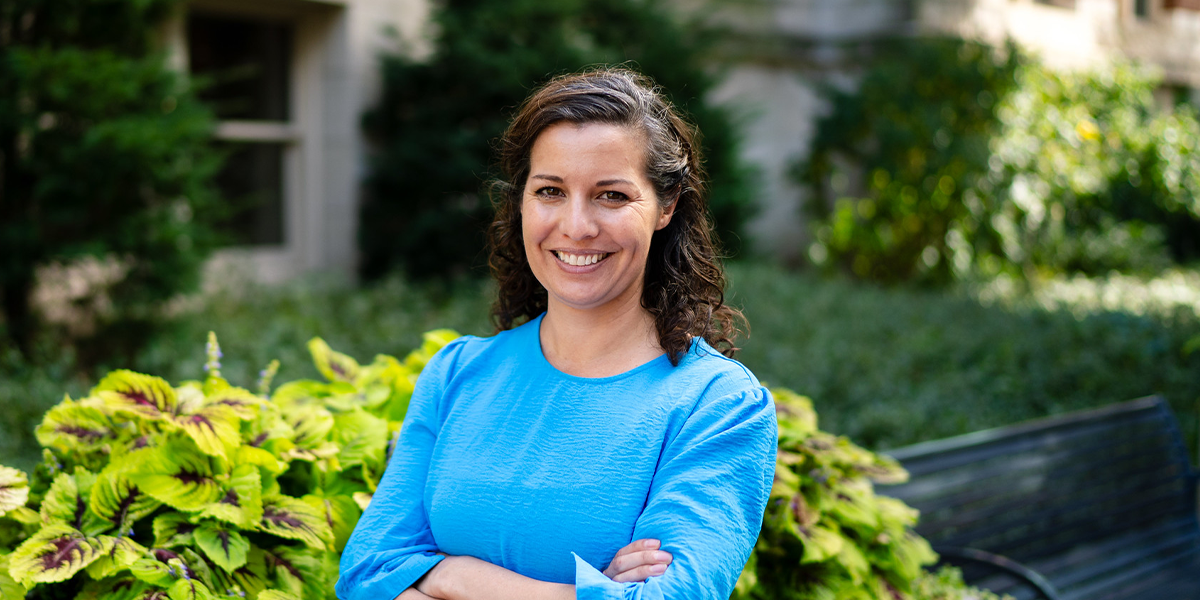
New research from the lab of Christina Camell, an assistant professor in the Department of Biochemistry, Molecular Biology, and Biophysics, sheds light on a factor contributing to age-related differences.
An old mouse and a young mouse meet in a research lab. Both have been raised in sterile environments, so their immune systems haven’t been exposed to the diverse array of pathogens found in the wild. What happens when the two mice are introduced to a third—this one from a pet store or another normal microbial habitat? Odds are, the old mouse will acquire an infection from the newcomer and die, while the younger mouse will survive.
These general trends align with expectations for humans. While an infection like the flu may be a temporary inconvenience for a younger person, it can be lethal for older adults. Now, new research from the lab of Christina Camell, an assistant professor in the Department of Biochemistry, Molecular Biology, and Biophysics, sheds light on a factor contributing to these age-related differences. The findings also point to a treatment that could boost the chances of survival for older adults.
When the immune system responds to an infection, one of its primary combatants is a type of white blood cell called cytotoxic T cells (CD8+). As humans age, CD8+ T cells become less effective, in part because of a protein on the surface of the T cells that becomes more prevalent over time. The protein, known as PD1, functions like an off-switch. “It’s actually a very important mechanism to ensure the T cells are not over-activated,” Camell explains. If it weren’t for PD1, the immune system could run amok, attacking healthy cells and thereby causing inflammation and tissue damage.
Camell’s research team, including graduate student Korbyn Dahlquist, worked with Sara Hamilton Hart’s lab in the Medical School to investigate the effectiveness of blocking PD1 to reactivate the T cells. The results, recently published in Nature Aging, show a dramatic increase in the survival rate for older mice. Without treatment, older mice raised in sterile environments died within two weeks of exposure to a real-world mix of pathogens on contaminated surfaces, but when the mice were treated with a PD1 blocker prior to exposure, nearly half the mice survived at least 30 days.
The treatments also yielded positive results when administered after the mice were exposed to pathogens, which has significant medical implications. “You don’t always know what you’re going to become infected with,” Camell explains, “So a critical test is whether you can give an intervention after the infection starts and still have an effective response.” Even with the treatments starting two days after exposure, nearly one-third of the older mice survived to the 30-day mark.
“The potential for the immune system to be rejuvenated is exciting,” Camell says, noting that previously, the assumption was that older T cells were totally exhausted and permanently out of commission. The researchers found that once PD1 was blocked, the T cells increased the production of another protein, granzyme B, which is crucial for how T cells combat infections and also cancer. Additionally, the results showed no increase in inflammation for older mice that underwent treatment, suggesting that the therapy works without increasing harmful side effects.
While results in mice and human studies do not always align exactly, given the added complexity of the human immune system, the path toward clinical testing in human studies could be short. PD1 blockers have already been approved for other medical applications—particularly as cancer treatments. In a world where our understanding of aging continues to evolve, the research is a step toward not just longer lives but healthier ones. –Jonathan Damery